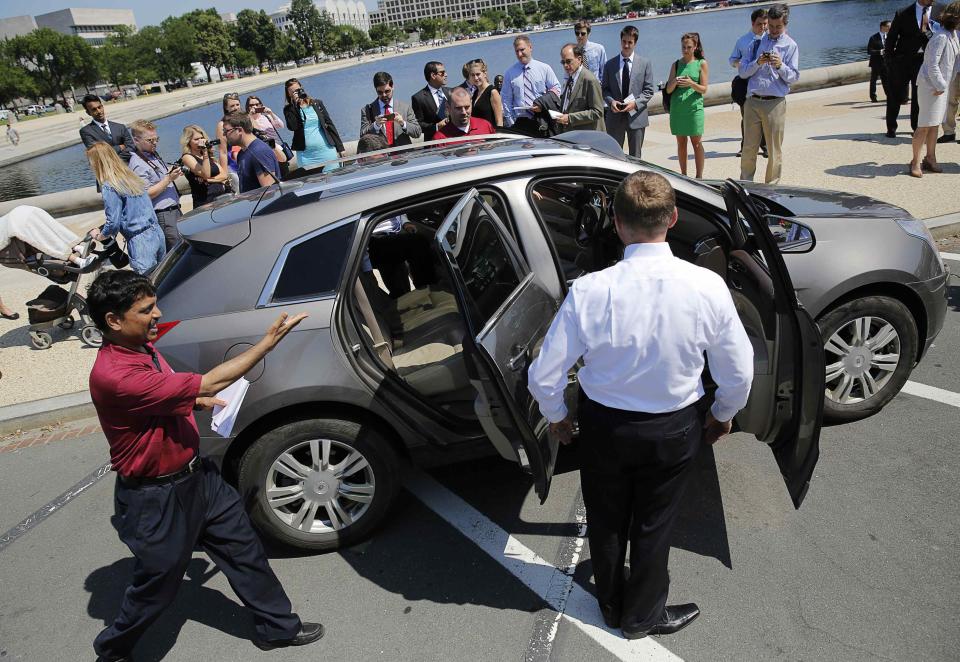
It was supposed to demonstrate an error-free future. But then its builders brought it to Washington, D.C.
Scientists from Carnegie Mellon University brought a prototype of a driverless car to Washington on Tuesday in an attempt to show Congress that it could embrace a future devoid of human errors.
It was not immediately clear whether the mere proximity to the Capitol created the series of events that led to an emergency switch being flipped, causing the car to shut down, or if an actual member of Congress did it.
But what was clear Tuesday evening was that the self-driving 2011 Cadillac SRX brought from Pittsburgh for the day by the House Transportation and Infrastructure Committee had been taken out of commission, at least temporarily, within hours of hitting the streets of the District of Columbia.
With it went three months of preparation and coordination. Six special transmission switches had to be installed by the D.C. Department of Transportation at intersections on the car’s route on CMU’s dime to prepare for the drive.
In true Washington fashion, no one would immediately take responsibility for the developing car situation. A spokesperson for the transportation committee directed questions to Carnegie Mellon, and a spokesperson for Carnegie Mellon said he could not say what circumstances brought the car’s operations to a halt. Nor could he say who might have been in the car when it happened, or where it was taken to be fixed — only that “they took it to test it” and that it stopped working.
All were hopeful the car would be back on the road Wednesday and that the panel’s members who were not able to take a test drive Tuesday would be squeezed into the schedule over the next two days in what originally was billed as a Tuesday-through-Thursday visit to the Capitol area.
Yahoo News originally had been slated to take a ride in the autonomous car on Tuesday at 3:30 p.m. on a predetermined route also taken by lawmakers from the Capitol’s reflecting pool, over the Potomac River on a major highway and then back.
Politico Pro, another publication booked for a test drive, sent out an alert at 2:36 p.m that the car had shut off, according to a source who is on the subscription service's list. The alert's author later clarified that he, in fact, did not break the car. “No, it wasn't me who broke the driverless car,” Adam Snider insisted on Twitter.
D.C. Delegate Eleanor Holmes Norton had been scheduled for the round trip from her home district to Virginia in the car at 1:30 p.m., according to a press release from her office, and was the last officially scheduled passenger before the Politico representative was slated to hop in the car.
A spokesperson for Holmes Norton forwarded Yahoo News’ inquiry to a legislative assistant who staffed the delegate; a voicemail and email to that staffer were not returned.
Earlier, when the sun was beating down on the Lincoln Memorial Reflecting Pool and the gathered media, House Transportation and Infrastructure Committee Chairman Bill Shuster praised the car and the rides he'd previously taken, before embarking on a successful spin in the vehicle’s first ride of the day.
“I want other members of Congress to be able to ride in the vehicle, because I think it’s so important to see the technology in action,” Shuster said. “This innovation is coming. The technology, the future, is coming to our streets and to our highways of America in this autonomous vehicle.”
It’s entirely possible Shuster, who is trying to secure more funding for transportation innovation, is right about the role of driverless cars in America’s future.
But first they have to be built to withstand Washington itself.


